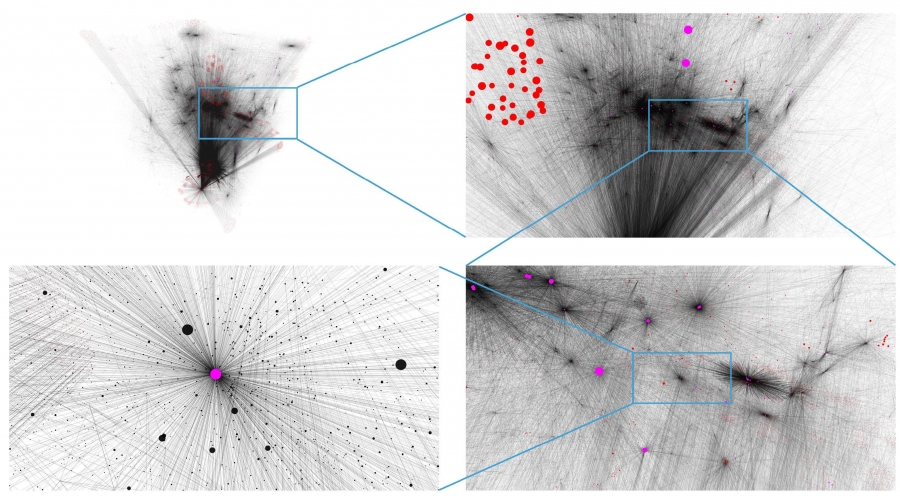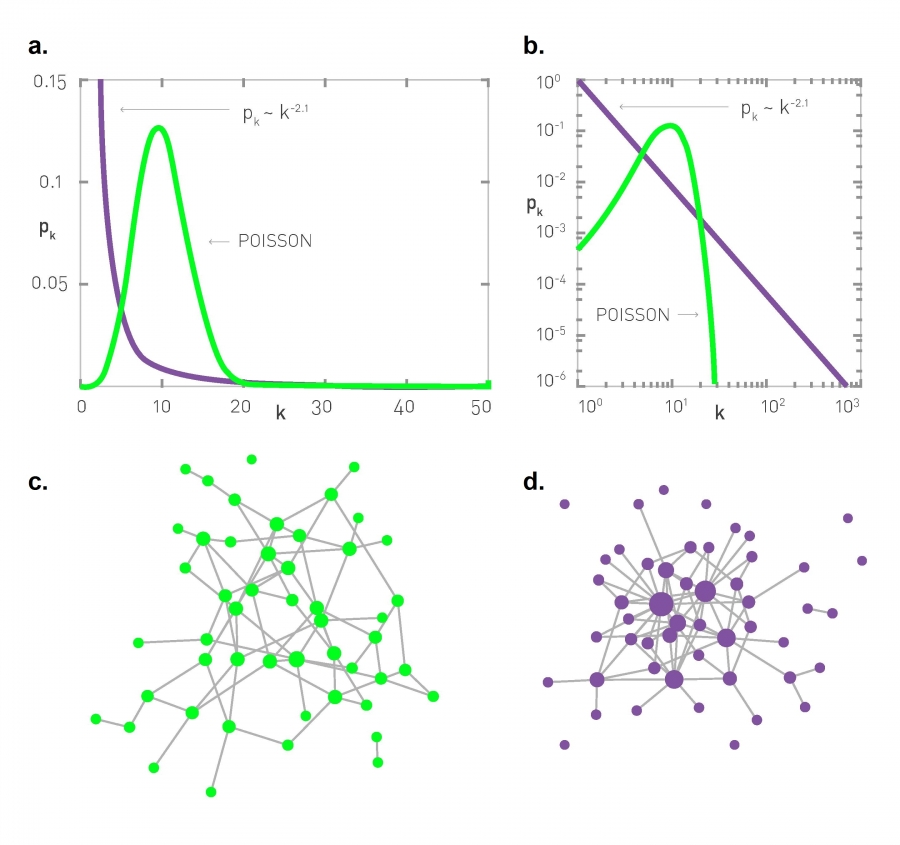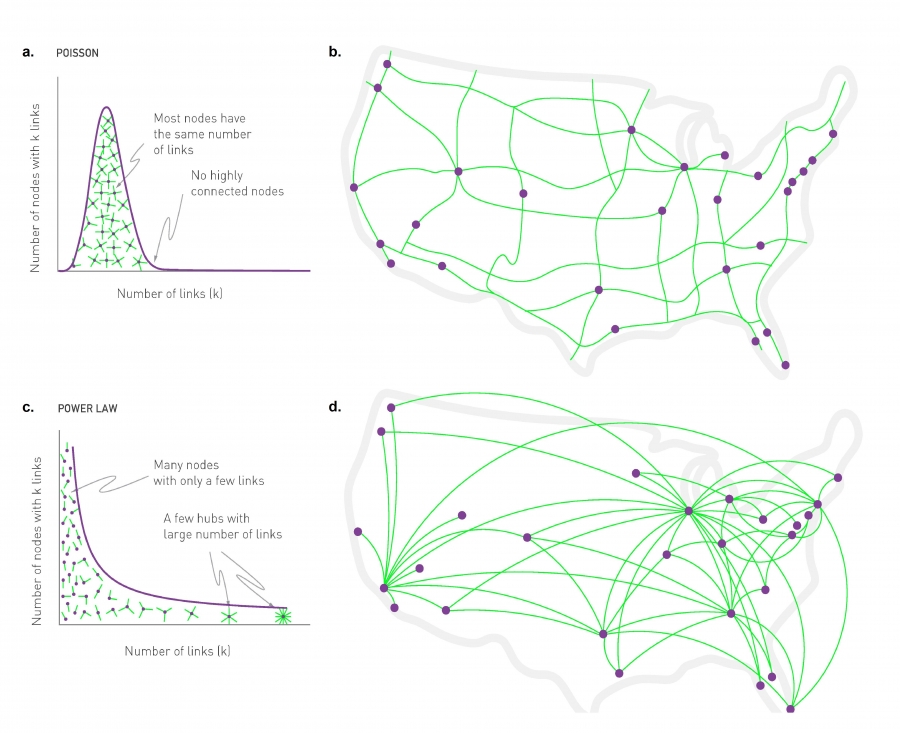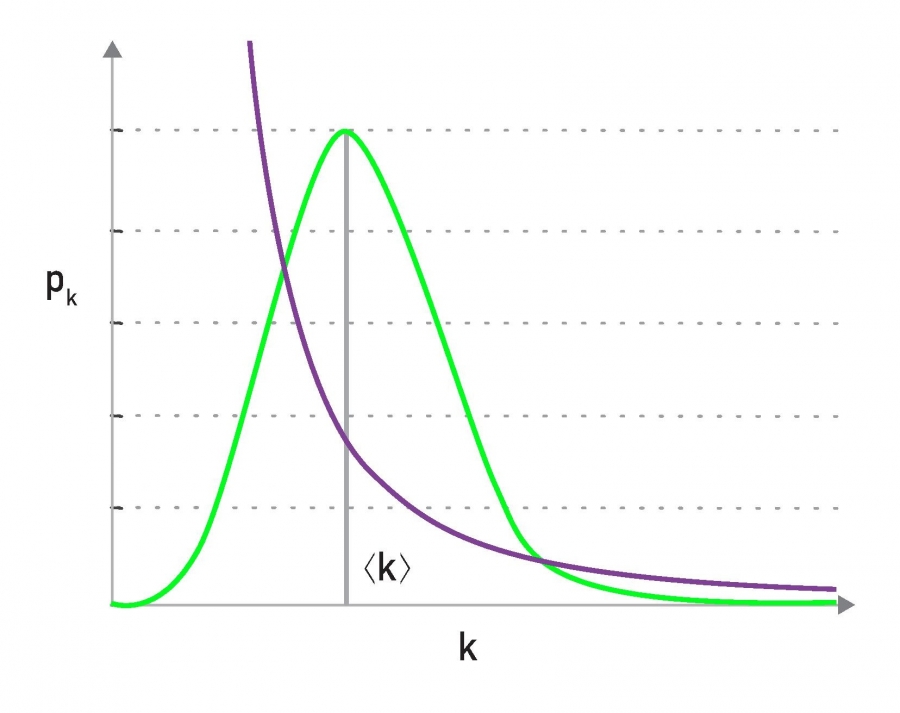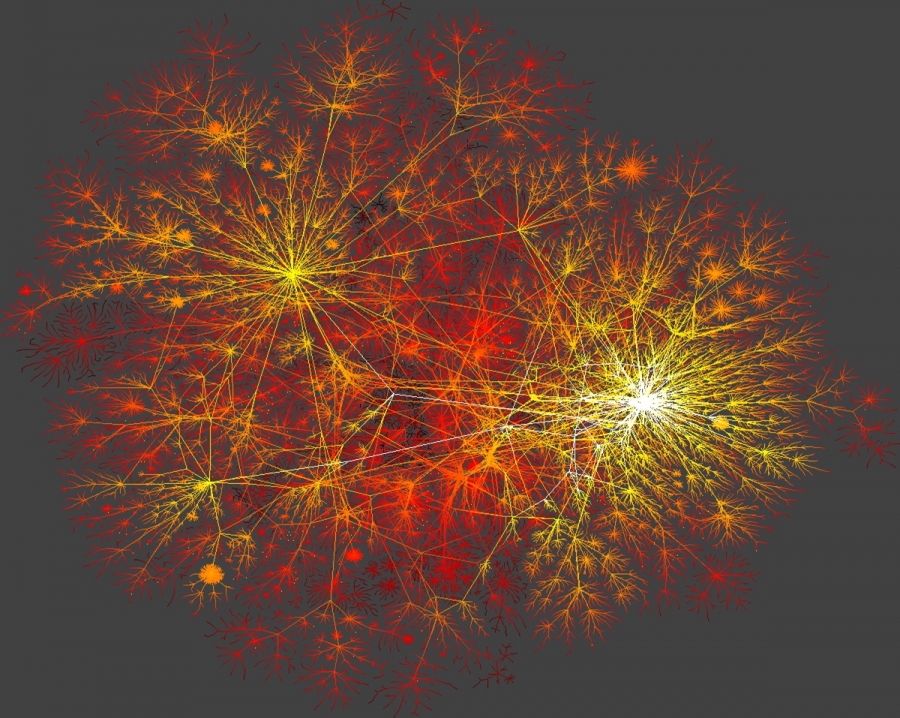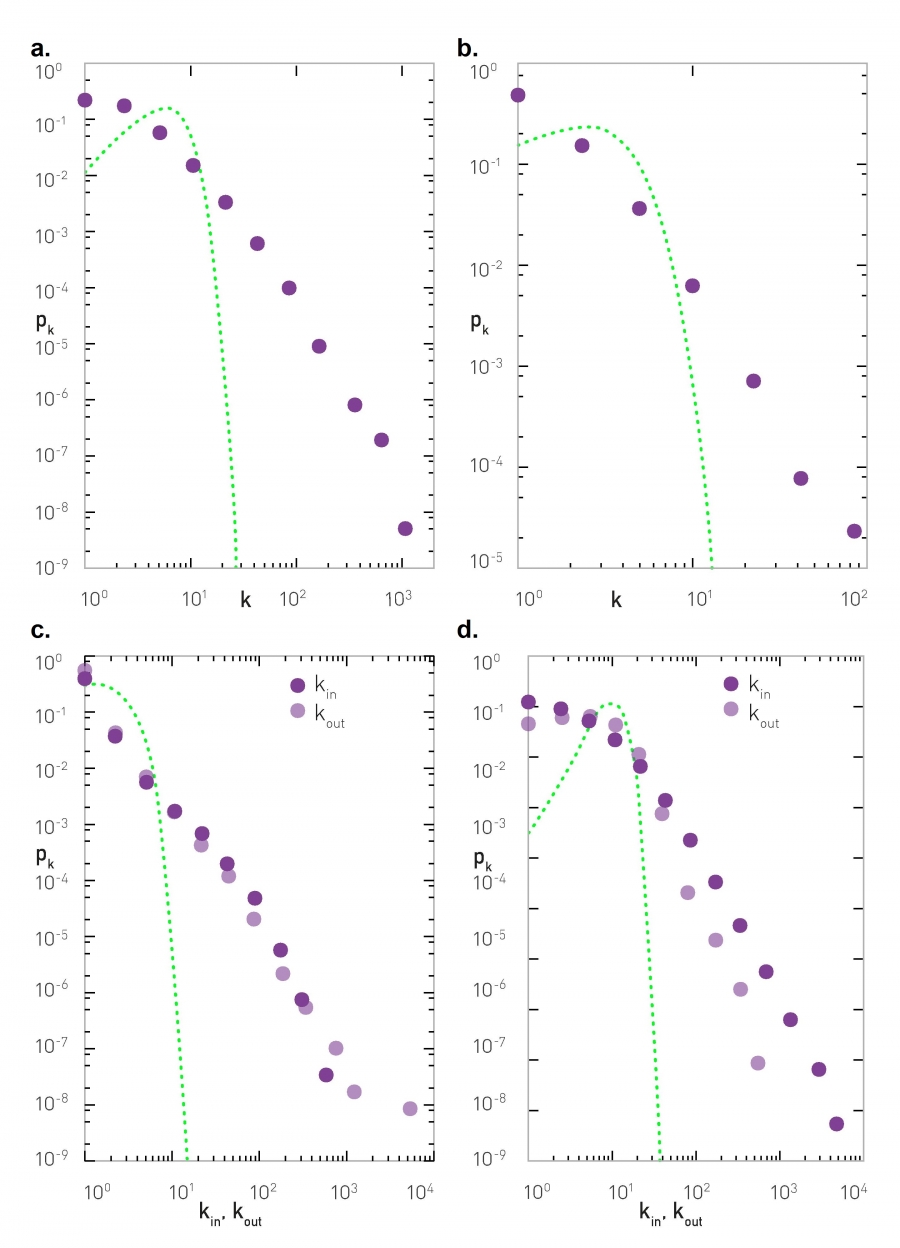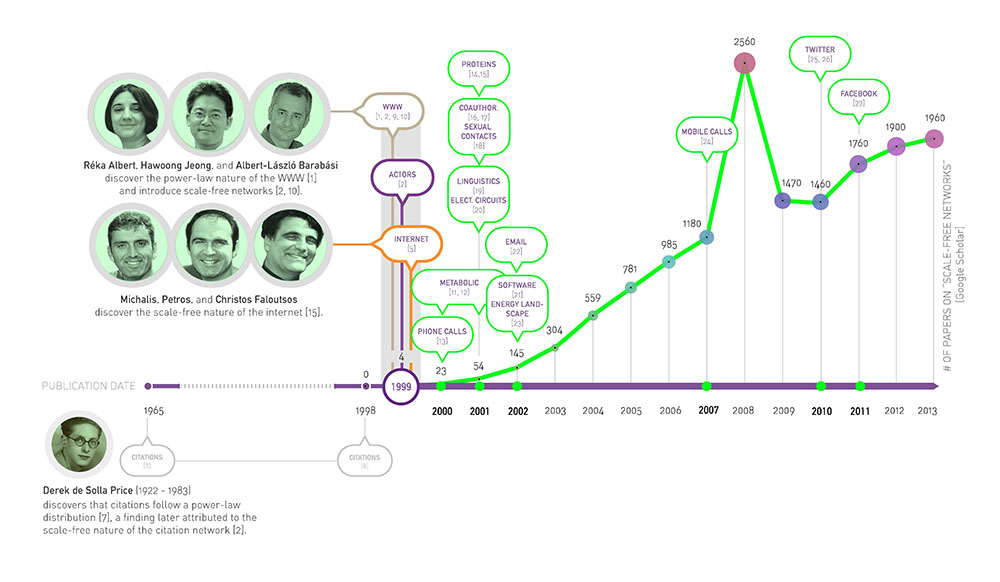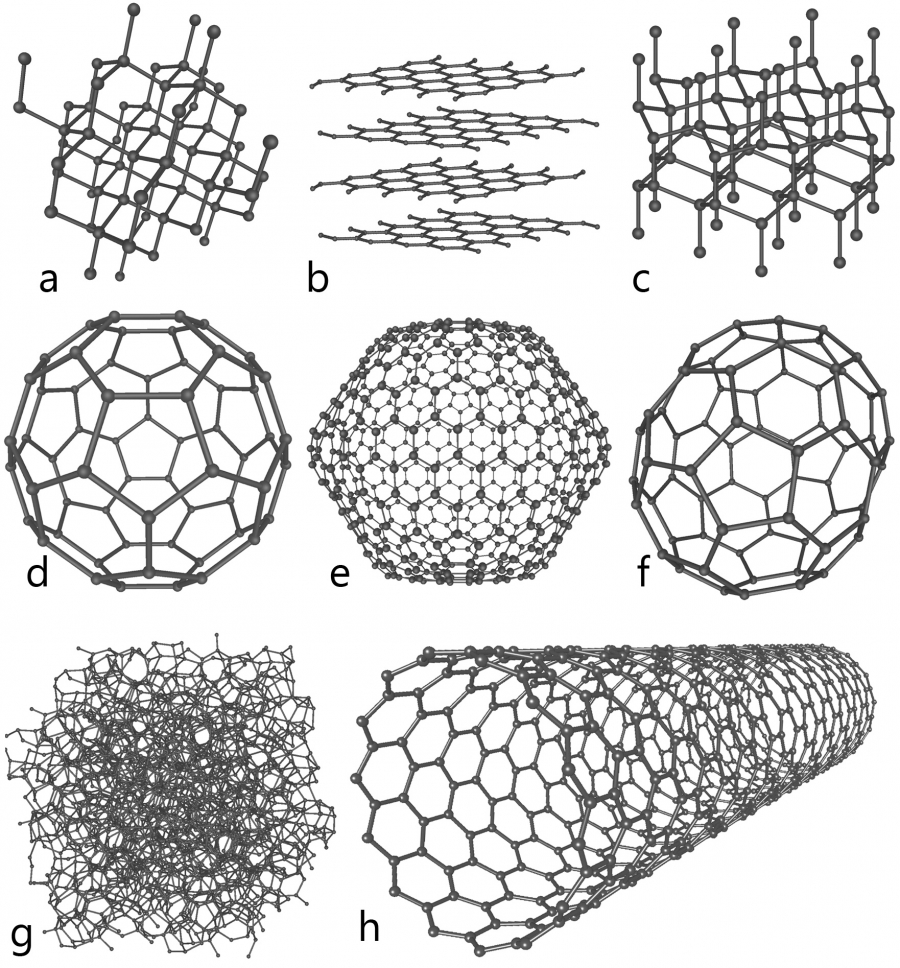04. The Scale-Free Property¶
Contents¶
- 04.01. Introduction
- 04.02. Power Laws and Scale-Free Networks
- 04.03. Hubs
- 04.04. The Meaning of Scale-Free
- 04.05. Universality
- 04.06. Ultra-Small Property
- 04.07. The Role of the Degree Exponent
- 04.08. Generating Networks with Arbitrary Degree Distribution
- 04.09. Summary
- 04.10. Homework
- 04.11. Advanced Topic 3.A Power Laws
- 04.12. Advanced Topic 3.B Plotting Power-laws
- 04.13. Advanced Topic 3.C Estimating the Degree Exponent
- 04.14. Bibliography
04.01. Introduction¶
scale-free vs. random network
- highly connected; hubs forbidden vs. small-degree, few hubs w/ large number of links
scale-free network
04.02. Power Laws and Scale-Free Networks¶
fig.4.2 indicates
eq.4.1: power law dist
degree exponent
depends linealy on
- ,
out-degree , in-degree
and
e.g., ,
scale-free (Barabási, A.L., Albert R., 1999) defined as:
A scale-free network is a network whose degree distribution follows a power law
04.02.01. Discrete Formalism¶
prob , links
constant is determined by the normalization cond
using eq.4.5,
hence
for , the discrete power-law dist:
04.02.02. Continuum Formalism¶
using normalization condition
eq.4.9
obtain
randamly chosen node has degree
Box 04.01. The 80/20 Rule and the Top One Percent¶
04.03. Hubs¶
high- region of
- for small , power law is above the Poisson fn
- for in the vicinity of ,
- for large ,
prob (node with )
in Poisson dist
in power law
if WWW be random network w/ , size
04.03.01. The Largest Hub¶
WWW is estimated to be nodes
Earth;s population about
human cell genes
maximum degree natural cutoff of the degree dist
exponential dist
minimum degree
∵
eq.4.15 provide
is :
eq.4.16 yields
04.04. The Meaning of Scale-Free¶
th moment of the degree distribution is def'd as
lower moments:
- : 1st moment is average
-
: 2nd moment, ,
- calculate variance
- standard deviation
- : 3rd moment, , determine skewness of distribution: how symmetric is around the average
for scale-free network
while is fixed, increases w the system size
- if , ,
- if ,
many scale-free netw ,
,
- Random netw have a scale
in range
- Scale-free netw lack a scale
power-law degreee dist w
1st moment: finite
2nd moment: infinite
e.g., WWW sample
,
04.05. Universality¶
04.05.01. Plotting the Degree Distribution¶
log-log plot
04.05.02. Measuring the Degree Exponent¶
04.05.03. The Shape of for Real Networks¶
Box 04.02. Timeline: Scale-Free Networks¶
Box 04.03. Not All Network Are Scale-Free¶
NOT all real networks are scale-free
- atoms in cystalline / amorphpus matrials
- neural network of C. elegans (Amaral, L.A.N., et al., 2000)
- power grid
04.06. Ultra-Small Property¶
hubs affect the small world property?
average distance ,
system size ,
degree exponent
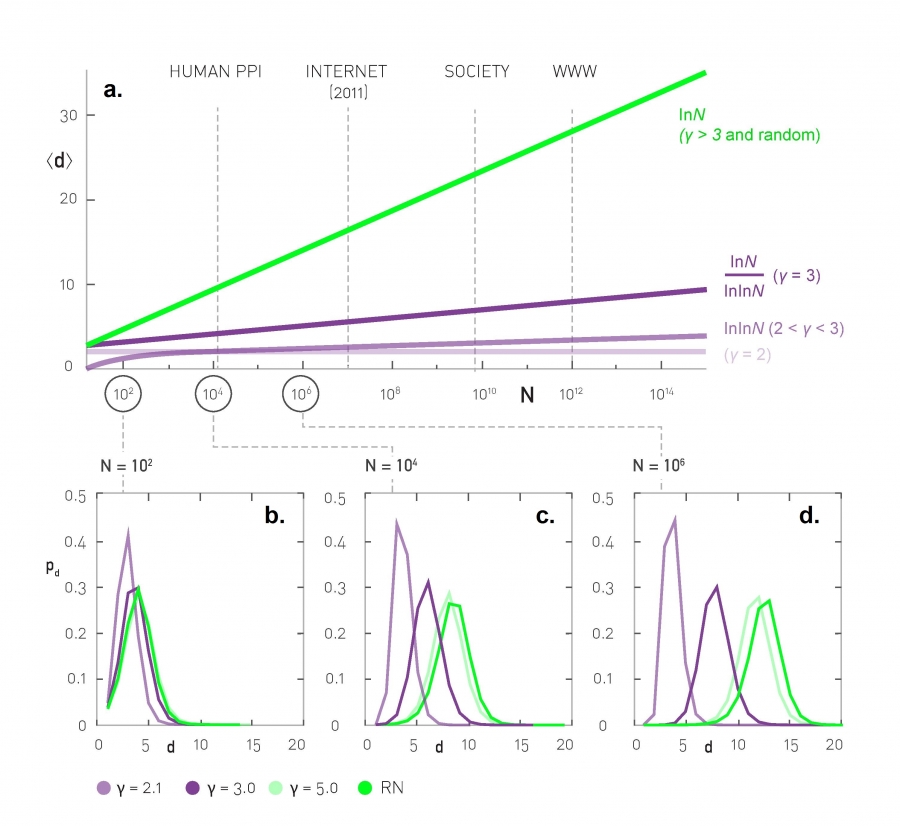
04.06.01. Anomalous Regime ()¶
according to eq.4.18 for
04.06.02. Ultra-Small World ()¶
eq.4.22
